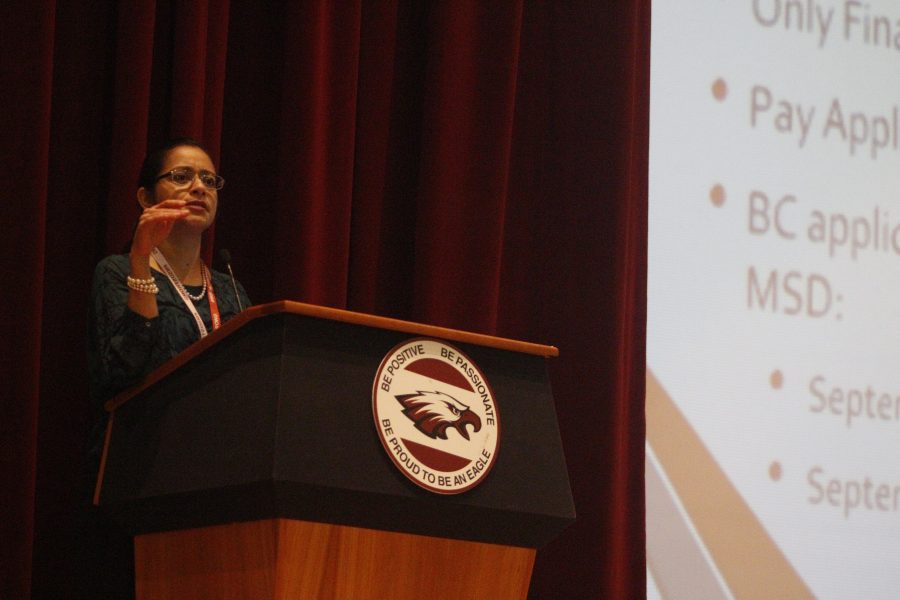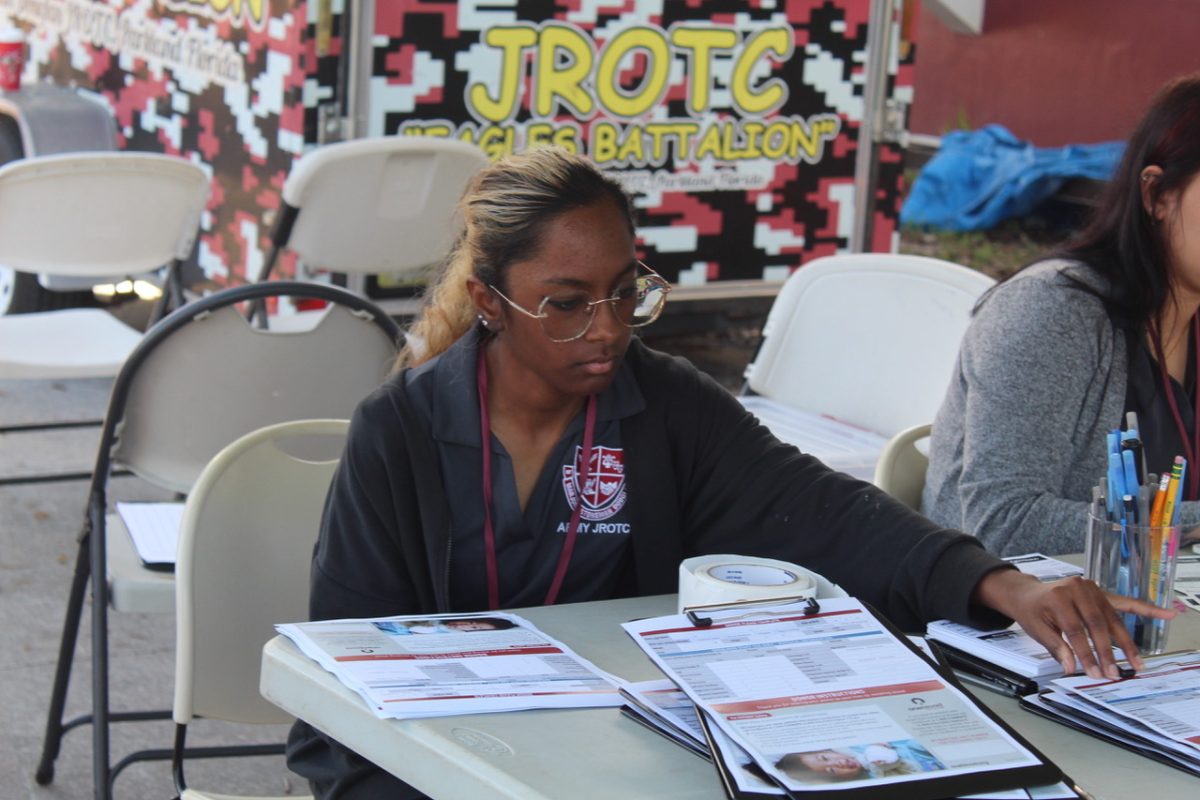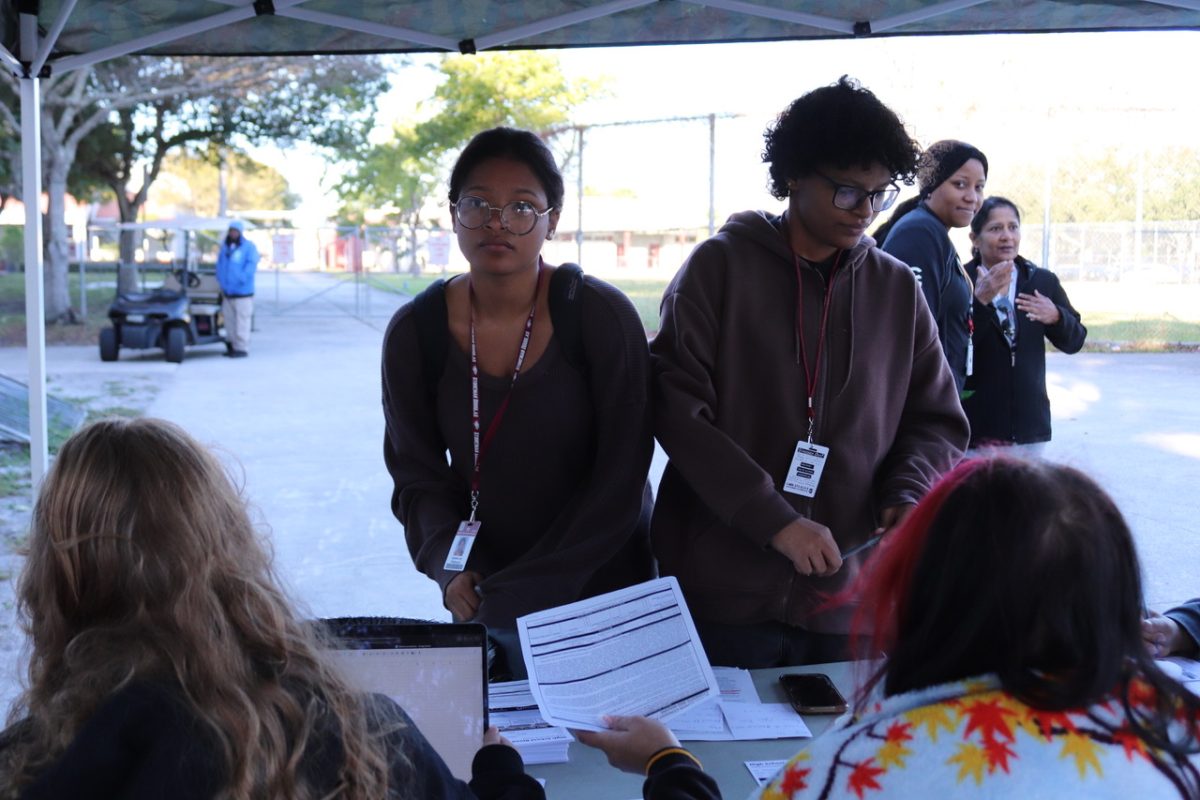
On Tuesday, Sept. 10, parents of the graduating class of 2020 gathered in the Marjory Stoneman Douglas High School auditorium for an informational brief conducted by BRACE advisor Ana Farrand on expectations regarding their child’s senior year of high school.
During the 90-minute meeting, Farrand discussed a variety of topics including college applications, financial aid, scholarships, and alternative paths students may take after graduation.
The presentation began with a conversation regarding the College Board’s SAT test waivers for MSD students. The attendees were informed that any student enrolled at MSD on Feb. 14, 2018, can receive these benefits. In-school College Board representative Beth Martin reviews, approves and pays every all of the applications that are eligible for this fee waiver. To receive the fee waiver, students must sign up for a specific test date on the College Board website and then email Msdstrong@collegeboard.org and inform her that they have completed the sign-up process.
“Knowing that there is one less expense to take care of helps ease the stress that comes with the entire admissions process,” senior parent Asha Gajadhar said.
The next topic of discussion was grade point averages. A student’s grade point average (GPA) and overall high school performance are key components in the entire college and financial aid application process. Ms. Farrand emphasized how every high school course taken from the seventh grade to senior year is accounted for. Most colleges focus on two main components of a student’s transcript, consistency and academic core GPA.
Application requirements vary amongst different universities. Some highly recommend teacher recommendation letters and student essays while others simply require a student’s transcript. This being said, some colleges, such as the University of Central Florida, do not require a letter of recommendation or a student essay. Submitting any of these documents when not required does not increase a student’s chances of getting accepted since college admissions must go through hundreds of applicants per day.
Although most high school graduates take the path of attending college after high school, some students have other plans. Other options include attending a vocational school where students prepare for a specific career and by training to conduct specific operations in that field. This process can start even before graduation if the student is willing to be a part-time student at MSD and a full-time student at a nearby vocational school. The last option discussed was going into the military In certain situations, this path can include the benefit of military personnel receiving a free education.
Farrand emphasized that the same path after graduation will not work for everyone. Every student has different aspirations that change over time. Whether a student plans on leaving Florida to attend college or start their careers, plans and goals change.
“Lets not just get our children accepted into a school for a shiny bumper sticker,” Farrand said.“Let’s get our children on the right path so that they actually graduate and can support themselves in the future.”
A benefit many Floridians take advantage of is Bright Futures which can cover 75% to 100% of tuition costs for students attending Florida colleges when certain requirements are met. The application takes only seven minutes to complete. Farrand highly recommends students to fill out the Bright Futures application as it provides an extra amount of support for indecisive students.
To stay updated on scholarship opportunities and application deadlines, students must add their parent’s email address on NAVIANCE to subscribe to Farrand’s weekly bulletins. Farrand plans on coordinating an even more thorough review of how to apply for FAFSA and other financial aid on Wednesday, Sept. 18 in the auditorium.











